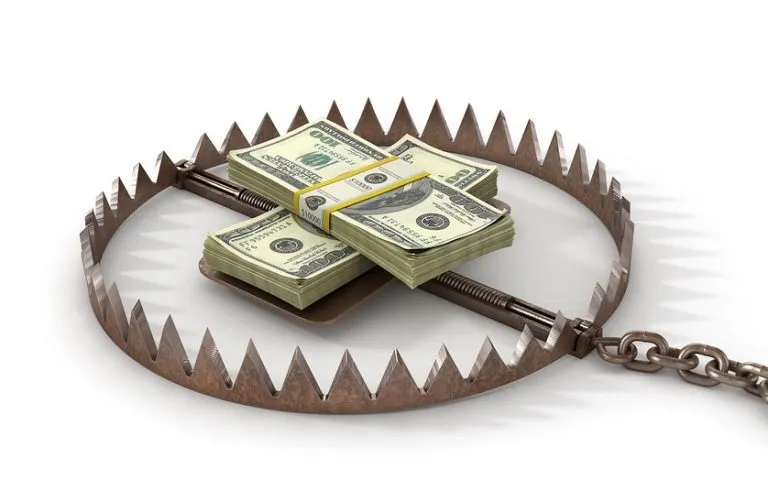When you are trading stocks, it is important to be aware of the potential traps that can occur. One such trap is the bear trap.
In this article, we will discuss what it is, how to identify it, and how to protect yourself from its effects.
What is a bear trap?
A bear trap is when the stock market looks like it is going to continue to fall, but then unexpectedly rises. This can lure investors into shorting a stock or stocks before a bullish reversal happens. It can affect specific assets or the market as a whole.
It can be caused by a variety of factors, such as false rumors or over-optimism about a company's prospects. The trend will overall be positive but the short-term bearish sentiments will trap traders into making poor decisions.
It is a common occurrence in stocks and can be difficult to identify. However, there are a few things you can look for that may signal that a bear trap is forming.
Bear trap example
Mr. Tradesalot has been watching Company XYZ for a while and he thinks it's about to drop based on a few indicators (that turn out to be false). He decides to short the stock because he believes it will continue falling in price, but just as he does, the stock starts to rise.
Mr. Tradesalot is now in a losing position because he got caught in a bear trap. If you're new to trading, or even if you're a seasoned investor, it's important to be aware of the different traps that can occur in the stock market.
Bear traps can cause short-sellers to make bets that a stock will go down in price, only to see the stock start to rally soon after they've placed their trade. This can result in a loss.
How does a bear trap work
The way it works is that investors who are bearish on a particular stock short the stock. Then, as the stock price starts to fall, other investors see this and think that the stock is going to continue to fall.
So they start selling their shares, which pushes the price down even further. The trap is that at some point the stock price reaches a level where the bears start to cover their short positions. As they do this, the price starts to rebound and goes back up.
This often happens very quickly and can result in the bears losing a lot of money. It can also happen if the bears get caught in a short squeeze. This is when the price of a stock starts to rise quickly and the bears are forced to buy back their shares to avoid even bigger losses.
The bottom line is that a bear trap can be a very dangerous thing for investors. If you're short a stock and the price starts to fall, be very careful. It might just be a trap. If the price begins to rebound quickly, you may have been caught in one.
How to identify a bear trap

The best way to avoid a bear trap is to be aware of them. Pay attention to news and rumors about companies, and don't make decisions based on them until you have verified the information.
Be cautious of stocks that suddenly drop with no clear reason. If there's no news to explain the drop, it could be a bear trap.
Finally, don't short stocks that are already in a downtrend, and have a high short interest. This is what happened to GameStop, which left many investors questioning how the short interest could be higher than 100%. This is the essence of the bear trap: it can lure you in with the false hope of a rally, only to then drop sharply.
What causes a bear trap?
Several things can cause a bear trap. One is false rumors or news about a company. This can lead to investors selling their shares, driving the price down. Another is when a large investor sells a large number of shares, causing the price to drop.
This is often done to drive the price down so that the investor can buy shares at a lower price. General fear in the market can also lead to a bear trap. When the market is down and investors are nervous, they may sell their shares even if there is no news about the company.
If there is a potential war break out or other global catastrophes are taking place, investors may sell their stocks regardless of the company's fundamentals. If the fear subsides, the market will likely rebound, leading to a bear trap.
A bear trap can also be caused by technical factors. For example, if a stock price falls below a support level, this can trigger selling by investors who have set stop-losses at that level. The price will soon recover as traders and investors buy the dip, completing the bear trap.
Is a bear trap bullish?
A bear trap is a false bearish signal that indicates a stock is about to decline when it's actually still in an uptrend, which is bullish.
So, if you're thinking about shorting a stock because you think it's about to drop, be aware that there's a possibility that it's just a bear trap. Do your research and be sure of your investment before making any decisions.
Bear trap vs bull trap
While a bear trap is when investors believe that a stock is going to continue to decline, but then it suddenly reverses course and starts to rise, a bull trap is an exact opposite. It is an upward movement in an asset’s price that seems like it will continue when the price suddenly starts to decline.
Bear traps can often lead to investors selling their shares too early, missing out on potential profits. Bull traps can lead investors to hold stocks that are bound to decline in price.
This can often lead to investors buying shares too early, only to see them lose value soon after.
So, which is worse?
Most profit-driven investors would probably say that a bear trap is worse because you can lose money if you sell your shares too early. However, bull traps can be just as dangerous for those that detest losing capital.
If you buy shares in a company that is about to decline, you could end up losing a lot of money. The best way to avoid getting caught in either type of trap is to do your research and make sure you have a good understanding of the company before making any investment decisions.
Conclusion
If you're bearish on a stock, you might be tempted to short it. But be warned: a bear trap could be lurking. A bear trap is a false signal that a stock is about to decline. It's a situation where the price of stock temporarily drops, but then quickly reverses course and starts to rise again.
This traps unwary bears who have shorted the stock, leading to losses. These trading traps are difficult to navigate through. As a trader, it's important to be aware of them and to do your homework before making any decisions.

